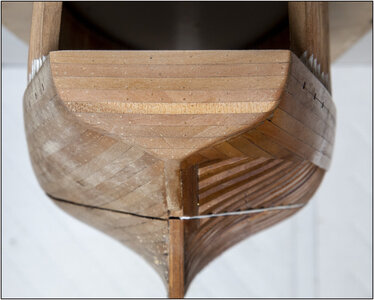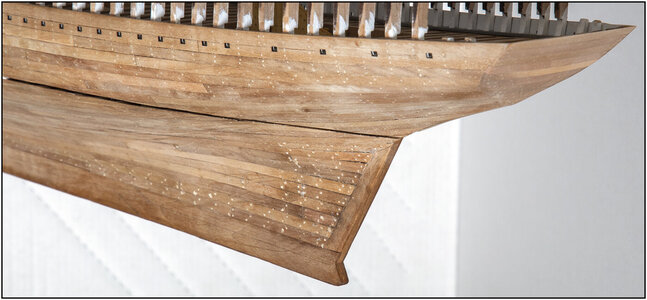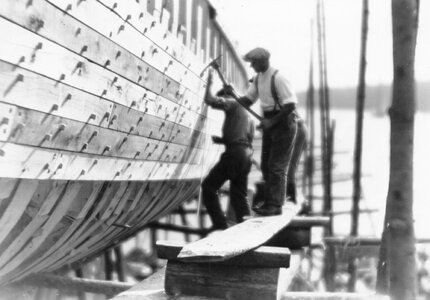Between the treenail sessions, to have a different mind-set during the monotonous work, also looked ahead.
Before I can paint the port side of the hull, the stern must also be planked. Otherwise, I'll keep updating parts with sanding and oiling.
Because the top has only 5 rows of planks on the starboard side, an irregular recess will be created at the planked stern:
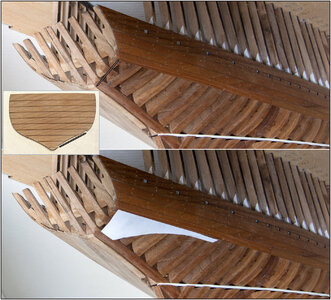
The arrow shows the recess between the planks on the hull. I have expressed this in the sheet that YQ provides with the kit. Because I don't use it anyway, I also made the recess in it. To also show that this is not done, IMHO.
It does not matter how the planks are installed: first the side and then the back or vice versa. It continues to show the gap.
That's why I decided to fill the back with nibbling planks. First made a template for the image with paper:

What can now also be clearly seen is that the ends of the treenails have dried up and give lighter accents. With the paint tests for the port side, they give darker accents. A nice extra contrast between the two sides.
The planks were made to measure, closed, sanded slightly in the curve and the holes drilled for the treenails:
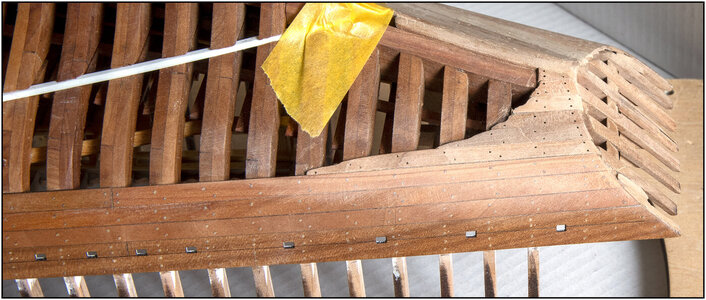
And then the old oil layer is damaged.

Installed the Treenails, sanded into the curve, polished and coated with linseed oil:
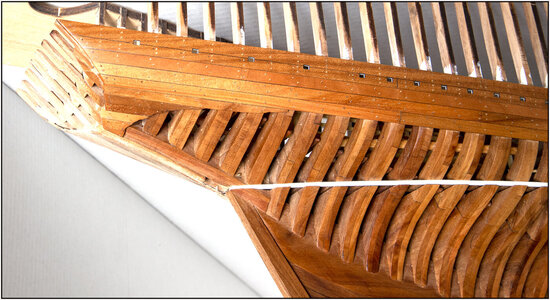
Soon another layer and then it will show as 1 part again.

Because I have also installed extra boards at the 2 places where the chainplates come, the extra boards at the back are not disturbing:
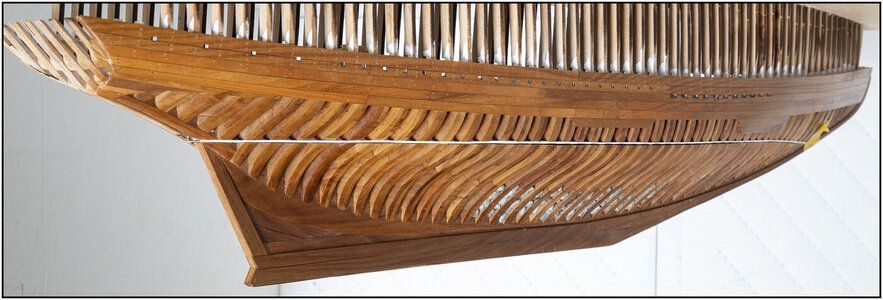
In my view, they reinforce my theme that I have also used in the interior design and which will soon also be reflected in the deck planking: supporting extra pieces of plank where this is necessary in terms of construction and visibility.
Regards, Peter.











